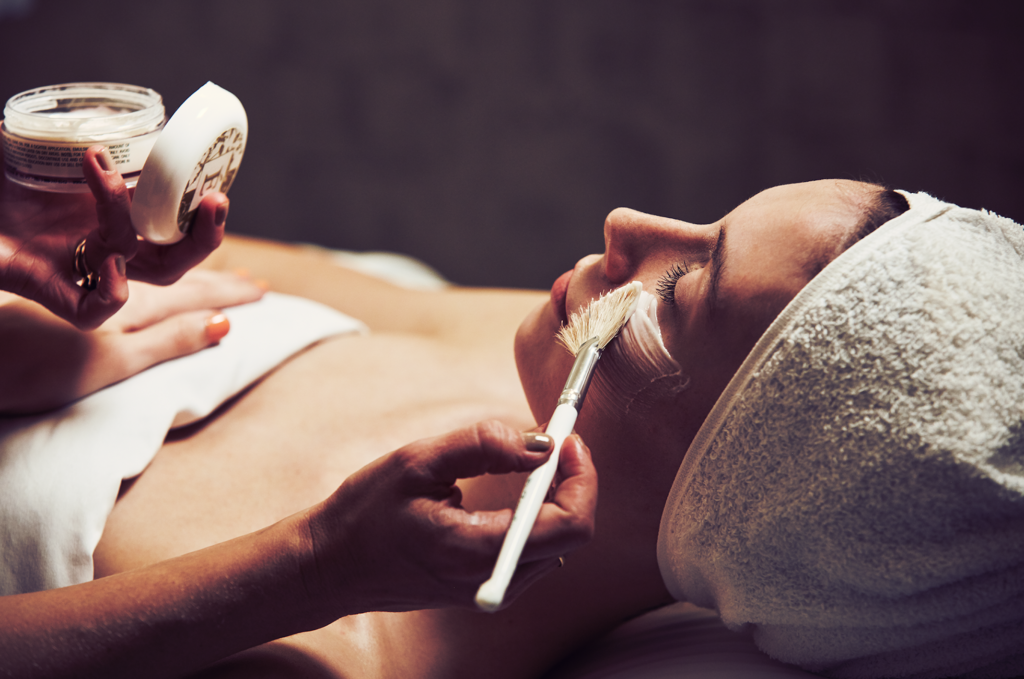Local aestheticians explain the importance of facials for every skin type.
By Sabrina LeBoeuf, Photo courtesy of Viva Day Spa

A dental hygienist and an aesthetician are rarely part of the same conversation, but they should be. That’s because the common misconception about facials is that they are a luxury. In reality, they’re a necessary aspect of a personal health regimen.
“Basically, a facial is a great way to get caught up to date,” says aesthetician Barbara Hochmann with Viva Day Spa. “It’s almost like going to a dental hygienist and getting your teeth updated, although there is a lot more relaxation, it smells really good and there aren’t the [drilling] noises.”
Your skin type determines how often you need to catch up with your aesthetician. According to Woodhouse Day Spa aesthetician Kelsey Fields, women with dry skin should get a facial every six weeks. On the other hand, those with oily skin should make a visit every four weeks.
At these regular visits, women with dry skin and oily skin should lean toward facials that focus on hydration and gentle exfoliation. For aging skin, women should go for facials that provide hydration and vitamin C. Anyone with sensitive skin should refrain from treatments involving microdermabrasion.
While these are general parameters for different skin types, the aesthetician can customize the products used during the facial based on her expert analysis of your skin type, according to Fields and Hochmann. In other words, it’s hard to choose a facial that’s inherently not good for you.
“The beginning of any facial treatment starts with a consultation check-in to clarify the service and to talk about what’s involved in that service and seeing if that is supporting that person’s goals that day,” Hochmann says. “So, the aesthetician can definitely give some advice and some suggestions based on the clarification process.”
During this process, it’s helpful to tell your aesthetician what types of products are part of your skin-care routine. Knowing whether you’re using a foaming or creamy cleanser before your facial appointment can help the aesthetician better treat your skin. You can also prepare for your facials by hydrating and drinking lots of water. Additionally, Hochmann and Fields say not to shave the day of your treatment and to pause at- home treatments a few days before your appointment.
“Don’t pre-extract the skin,” Hochmann says. “Let the aesthetician do that. Be excited, happy and ready to relax and be taken care of. There are very rare moments sometimes for people to get some care and attention.”
Once you’re out of the spa post-facial, refrain from getting direct sunlight and touching your face. After a facial, Hochmann says it’s normal for the skin to experience breakouts, rosiness and a little inflammation. These are the usual reactions to purging the skin.
“If someone has a bad reaction to a facial, I recommend highly to contact [the spa] and talk with either the aesthetician or a highly knowledgeable front-desk staff [member]. And we are 100 percent on board with talking someone through what would help alleviate whatever the [circumstance is],” Hochmann says.
Also, according to Fields, the most important part of skin care begins after the facial is complete.
“In school, we learned skin care is 80 percent at home and 20 percent at the spa. So, the numbers kind of shocked me out of my comfort zone, you know,” Fields says. “I [was] just thinking using a cleanser every day was enough. It’s really not.”
To determine whether a skin-care line is working for your skin type, Fields recommends using the same product line for a minimum of six weeks. Just like a facial, breakouts are not an abnormal reaction since the products are purging the skin of impurities.
Once you’ve gotten yourself on an appropriate facial schedule and regularly use the best skin-care products for your type of skin, you can rest assured you’re always putting your best face forward.



